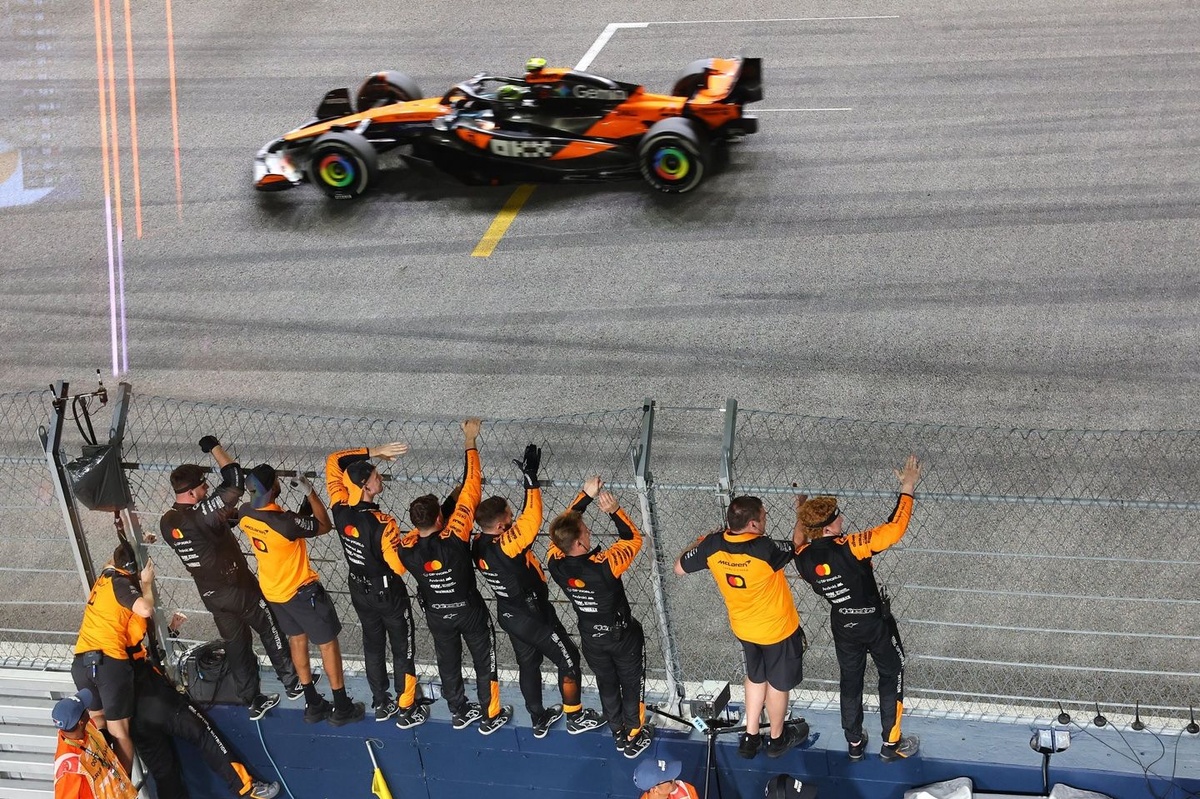Mclaren‘s Bid for Singapore Supremacy Falls Short Again
In what was anticipated to be a triumphant return to form at the Singapore Grand Prix, McLaren faced a disappointing outcome, finishing in third and fourth place after last year’s resounding victory. Despite the promising conditions that the Marina Bay circuit provides, the team struggled to regain the dominance that had previously defined their performance.
Why McLaren Failed to Reprise F1 Singapore GP 2024 Dominance
After experiencing challenging races in Monza and Baku, McLaren had set its sights on Singapore, a track renowned for favouring the characteristics of its MCL39 car. Team principal Andrea Stella had even positioned the Marina Bay race as a pivotal opportunity for redemption. However, the team could not replicate its earlier success, and the excitement quickly turned bittersweet as the McLaren cars struggled to find the pace necessary for victory.
Lando Norris and Tyre Challenges
A crucial insight came from Lando Norris after Free Practice 2, where he expressed his inability to find the right feeling with the car, particularly on the softer tyre compounds. The loss of confidence in the car’s front end posed significant challenges for the team. Stella reiterated this, noting that driver comfort with tyre behaviour was markedly less than in the previous season.
Circuit Demands vs. Car Performance
The Marina Bay circuit is a unique challenge that demands high braking and cornering precision, particularly in its myriad tight turns. While the MCL39 has shown strength in mid-corner performance during earlier races, it appeared unable to leverage this advantage in Singapore. Qualifying data highlighted that both Norris and his teammate Oscar Piastri struggled in key sectors where high-speed cornering and traction were critical.
Key Qualifying Issues
Data indicated that both drivers lost vital time in corners crucial for maintaining speed. This issue was particularly pronounced with the soft tyres, complicating their attempts to push through corners as they lost front-end feel. Consequently, what could have been a significant advantage instead turned into a liability.
The Balancing Act with Tyres
The discrepancy in performance between different tyre compounds became apparent to both drivers during the race. Norris noted that the MCL39 regained balance when using medium and hard tyres, leading to more comfortable handling and improved lap times. He admitted that the softer compound destabilised the car, as it struggled to stay within its optimal operating temperature range.
The Bigger Picture
While the constructors’ championship has been confirmed for McLaren, the Singapore race underscored a crucial lesson: even dominant teams face intricate challenges that can derail success. Despite their technical advancements, specific racing conditions can expose vulnerabilities that must be addressed for future races.
Conclusion
In summary, McLaren’s resolve to recapture its Singapore dominance was thwarted by hurdles predominantly linked to tyre performance and driver confidence. This experience serves as a reminder that even in a season marked by success, micro-level details can dictate the outcome of critical races in Formula 1.





